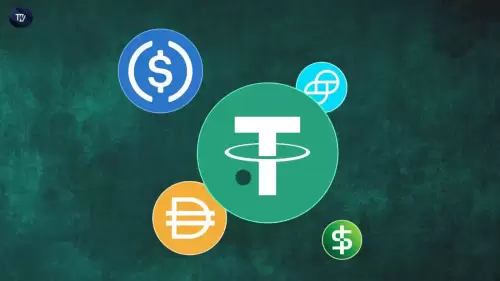 |
|
 |
|
 |
|
 |
|
 |
|
 |
|
 |
|
 |
|
 |
|
 |
|
 |
|
 |
|
 |
|
 |
|
 |
|
Cryptocurrency News Articles
Tokenomics Explained: Understanding the Economic Principles Governing Cryptocurrencies
May 10, 2025 at 06:10 am
Tokenomics are the economic principles and models that govern cryptocurrencies. They involve token supply mechanisms, distribution strategies, utility features

Tokenomics are a critical aspect of any cryptocurrency project, and they play a crucial role in determining its potential for success and sustainability. As the cryptocurrency industry continues to evolve rapidly, understanding the principles of tokenomics is more important than ever for making informed investment decisions.
In this article, part of our series on crypto investing essentials, we will delve into the key components of tokenomics, discussing how they work together to create a balanced and sustainable economic model for a cryptocurrency. We will also examine some common red flags to watch out for and provide examples of how different projects use tokenomics in practice.
Why Do Tokenomics Matter?
A blend of “token” and “economics,” tokenomics is the set of economic principles and models that govern the creation, distribution, and management of cryptocurrencies. It encompasses the factors that influence a token’s utility, scarcity, distribution, and ultimately, its value.
Just as traditional economics analyzes the production, distribution, and consumption of goods and services, tokenomics examines how digital tokens function within their own ecosystems.
The tokenomics of a crypto project will ultimately impact your investment decisions and the overall health of crypto projects.
Key Components of Tokenomics
In this section, we’ll break down the details and elements that create tokenomics:
Token Supply
The supply mechanism is one of the most fundamental aspects of tokenomics. It dictates how new tokens are created and how the total outstanding supply changes over time.
Generally, tokens with a fixed or diminishing supply tend to appreciate in value if demand grows. In contrast, inflationary tokens may face more downward price pressure unless sufficient utility drives demand.
For example, Bitcoin’s halving events, which reduce the rate of new Bitcoin creation approximately every four years, are often associated with Bitcoin price increases due to the reduction in new supply.
Key Takeaways
Healthy tokenomics include reasonable team/investor allocations (10-20%), transparent vesting schedules, and mechanisms preventing excessive token concentration.
Why Do Tokenomics Matter?
A blend of “token” and “economics,” tokenomics is the set of economic principles and models that govern the creation, distribution, and management of cryptocurrencies. It encompasses the factors that influence a token’s utility, scarcity, distribution, and ultimately, its value.
Just as traditional economics analyzes the production, distribution, and consumption of goods and services, tokenomics examines how digital tokens function within their own ecosystems.
The tokenomics of a crypto project will ultimately impact your investment decisions and the overall health of crypto projects.
Disclaimer:info@kdj.com
The information provided is not trading advice. kdj.com does not assume any responsibility for any investments made based on the information provided in this article. Cryptocurrencies are highly volatile and it is highly recommended that you invest with caution after thorough research!
If you believe that the content used on this website infringes your copyright, please contact us immediately (info@kdj.com) and we will delete it promptly.




























































